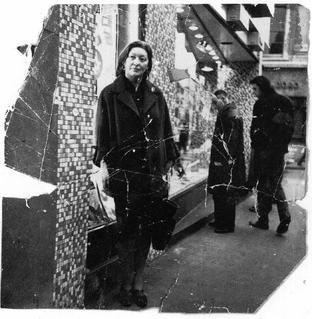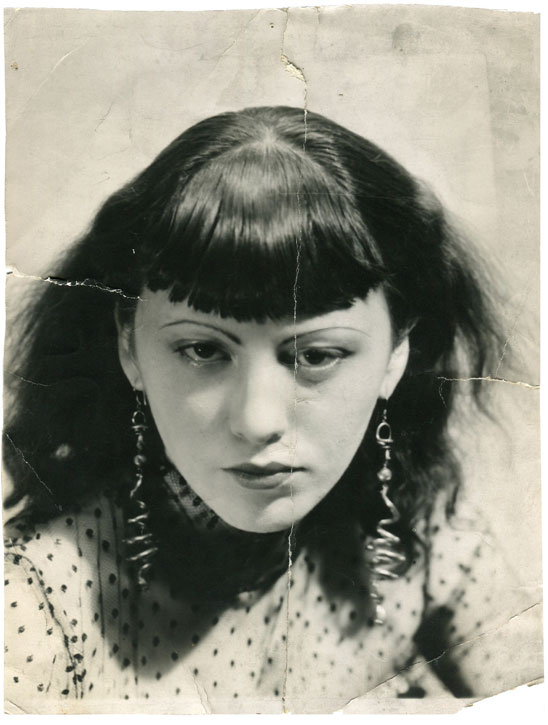Isabel Rawsthorne (1902-1971) was an English painter, and one of the first British surrealists. She had a unique approach to painting and was particularly known for her depictions of landscapes and still life. Rawsthorne was born in London and studied art at the Slade School of Art before travelling to Paris and studying at the Atelier of André Lhote and Fernand Léger. She returned to London and was associated with the Bloomsbury Group and the Surrealist Movement. Rawsthorne’s works are now held in many public collections, including the Tate Gallery and the Museum of Modern Art in New York.
Early Life
and Education
Isabel Rawsthorne is a renowned British artist and writer. Born in London in 1914, she was the daughter of a successful stockbroker. She received her early education at a private school in London before attending the Slade School of Fine Art in London. After studying in Paris for a year, she returned to London and began exhibiting her work in the early 1930s. Rawsthorne was an avid traveler, and her travels inspired her artwork. She traveled to India, Egypt, Greece, and the United States, taking in the cultures and landscapes of each country. Throughout her career, she explored a variety of artistic mediums such as painting, collage, and photography. She also wrote several books, including her autobiography, which was published in 1977. Rawsthorne was a pioneer in the art world, pushing boundaries and exploring new ideas. Her work is still celebrated today, and her legacy lives on through her legacy of art and writing.
Education and Training
Isabel Rawsthorne was an English painter and sculptor who is considered one of the most influential artists of the 20th century. She was a student of the Royal Academy of Arts and studied under the tutelage of several prominent teachers, including Henry Tonks and Charles Ginner. In 1919, Rawsthorne attended the Slade School of Fine Art, where she was exposed to a variety of styles and techniques. She later enrolled in the Central School of Art and Design, where she studied ceramics and metalwork. During this period, she also developed an interest in abstract art and sculpture. In the 1930s, Rawsthorne began to explore cubism and surrealism, which led to her first solo exhibition in 1936. In the years that followed, she continued to experiment with new methods and styles, including collage, photography, and a form of abstract expressionism. Rawsthorne’s work is often characterized by an interplay between two-dimensional and three-dimensional elements, as well as a unique use of color and texture. Her artwork has been exhibited in galleries and museums all over the world, and her influence continues to be felt in the art world today.
Career and Accomplishments
Isabel Rawsthorne is a renowned British painter who is known for her distinctive and striking modernist artworks. From the 1920s onwards, she has been a prominent and celebrated artist whose works have been exhibited in galleries worldwide. Throughout her career, Rawsthorne has been praised for her bold use of colors, shapes, and textures, as well as her ability to create art that speaks to the emotional and psychological aspects of life. This article examines her career and accomplishments, exploring the evolution of her style and techniques.
Rawsthorne’s career began in the late 1920s, when she was a student at the Slade School of Fine Art in London. During this period, she experimented with a variety of mediums and techniques, including oil paints, watercolors, and pencils. She quickly developed a signature style, which featured bold lines, vibrant colors, and a unique approach to composition. In the 1930s, she began exhibiting her works in major galleries in London and beyond, including the Tate Gallery, the Royal Academy of Arts, and the Guggenheim Museum.
In the 1940s, Rawsthorne began to focus more on portraiture, creating a series of portraits that focused on the psychological aspects of her subjects. Her portraits often featured distorted shapes and vivid colors, as well as a highly expressive style that was in stark contrast to the more traditional styles of the time. She also experimented with abstract art, creating works that featured geometric shapes and bold colors.
Throughout her career, Rawsthorne has been lauded for her innovative and captivating artworks. Her works have been exhibited in galleries and museums worldwide, and she has won numerous awards for her achievements. Today, she is considered one of the most influential and respected British painters of the twentieth century.

Personal Life
Isabel Rawsthorne was born and raised in London, England. She was the daughter of a well-to-do family, and she was well-educated. She went to the Slade School of Fine Arts in London and was a successful artist in her own right.
Isabel was a very social person, and she was known to be a great conversationalist, often entertaining people with her stories and wit. She was also a great hostess and enjoyed hosting dinner parties and gatherings with friends.
Isabel was an avid reader, and she had an extensive collection of books. She was also an enthusiastic traveler, often taking trips throughout Europe and the United States.
Isabel’s life was sadly cut short at the age of 57, after she succumbed to cancer. She left behind an impressive body of work, including paintings, drawings, and sculptures that are still admired to this day.
Legacy
of Inspiration
Isabel Rawsthorne was a trailblazer in the art world of the late 20th century. A self-taught artist, she created abstract and figurative works of art that are renowned for their boldness and expressiveness. Rawsthorne’s unique aesthetic was informed by her travels, her explorations of modern and postmodern art, and her experience as a female artist in a male-dominated field. Her artworks demonstrate her engagement with the world around her, as well as her own inner life. From her early experiments in abstract expressionism to her later works, Rawsthorne’s art serves as a legacy of inspiration for generations of artists. Rawsthorne was a strong advocate for the recognition of female painters and sought to make a place for their work in the art world. Her influence can still be felt today, as her work continues to inspire and challenge viewers. Rawsthorne’s life and art demonstrate the importance of pursuing your own creative vision, no matter the obstacles. It is a testament to her courage and strength of character that she was able to make her mark in the art world in the face of adversity.
Honors and Awards
Isabel Rawsthorne is one of the most celebrated and prolific fashion designers of the 20th century. She was an innovator in the industry and her work has been honored and awarded multiple times by the fashion world. Rawsthorne was the first British designer to be awarded the prestigious Neiman Marcus Award in 1975, and was posthumously inducted into the Fashion Walk of Fame in 1995. She was also the recipient of a number of Lifetime Achievement awards from the Council of Fashion Designers of America and the British Fashion Council. In addition to her successes in the fashion world, Rawsthorne was a patron of the arts, and her work was recognized by the Royal Academy of Arts in London. Rawsthorne’s fashion designs are still admired and sought after today, and her legacy as a fashion icon lives on.
FAQs About the Isabel Rawsthorne Biography
1. Who is Isabel Rawsthorne?
A: Isabel Rawsthorne is a British artist who is best known for her abstract paintings and sculptures. She was born in Yorkshire, England in 1957 and is currently based in London.
2. How did Isabel Rawsthorne become an artist?
A: Isabel Rawsthorne began her career as a student at the Slade School of Fine Art in London. After graduating, she worked as an assistant to various artists before ultimately deciding to pursue a career as an independent artist.
3. What is the most notable artwork by Isabel Rawsthorne?
A: Isabel Rawsthorne’s most notable artwork is her sculpture “The Watcher,” which is currently on display at the Victoria and Albert Museum in London.
Conclusion
Isabel Rawsthorne was a remarkable and talented artist of the twentieth century. She was a pioneering figure in modernist art and a major influence on the development of British modernism. Her work was known for its innovative use of color and form, and her influence is still seen in modern art today. Although she died relatively young, the legacy of her work lives on. Her life and art are important reminders of the power of creativity and the importance of pushing boundaries.




